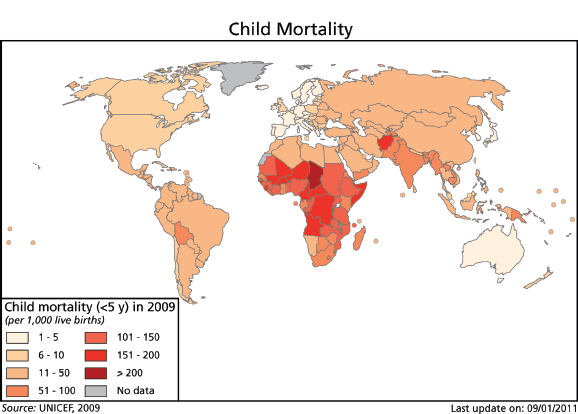
Definition: Life expectancy at birth (top panel) is the number of years that a person can expect to live from birth. It is an average measure for the whole population and therefore obscures a great deal of nuance in the risk of death over the life course. A low-average life expectancy for a population may be due to a high child mortality (bottom panel) rate followed by a reasonable life span among those who manage to survive childhood. Life expectancy is a widely used measure of health because it is both sensitive to broad influences on health and is a simple measure that allows temporal and geographic comparisons. Child mortality rate (bottom panel) is the number of children who die before the age of 5 years per 1,000 live births.
Trends: Life expectancy has generally been increasing in most regions of the world, but some areas have gone through dips, the most notable examples being: (1) Sub-Saharan Africa where the HIV/AIDS epidemic has dramatically reduced life expectancy at birth in high prevalence countries, such that it is now less than 50 years for the southern Africa sub-region; (2) the USSR and post-Soviet countries which experienced rising mortality from the mid-1960s, especially among males. What is striking in the map opposite is the low life expectancy throughout most of Sub-Saharan Arica. HIV has contributed heavily to this in some countries but comparison with the Gross Domestic Product map shows how the distribution of poverty closely matches low life expectancy. In all regions the life expectancy of males is considerably shorter than that of females, mainly due to an excess risk of deaths between the ages of 15 and 60 years.
Stay updated, free articles. Join our Telegram channel

Full access? Get Clinical Tree




